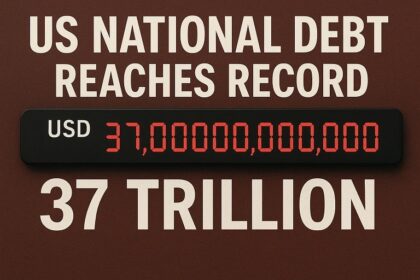India Approves Major GST Overhaul, Simplifying to Two Slabs: A Game-Changer for Consumers and Businesses
On August 21, 2025, India’s Goods and Services Tax (GST) Council, chaired by Finance Minister Nirmala Sitharaman, approved a landmark overhaul of the GST structure, streamlining the existing four-tier system into a simplified two-slab framework of 5% and 18%, with a special 40% rate for select luxury and “sin goods.” Announced as a “Diwali gift” by Prime Minister Narendra Modi during his Independence Day speech, this reform, dubbed GST 2.0, aims to reduce taxes on everyday essentials, boost consumption, and simplify compliance for businesses, particularly MSMEs. With 99% of items currently taxed at 12% moving to 5% and 90% of those at 28% shifting to 18%, the overhaul is set to lower prices for consumers while addressing long-standing classification disputes. This article provides a detailed analysis of the reform, its implications, and supporting data in tables, concluding with answers to frequently asked questions.
Overview of the GST Overhaul
Introduced in 2017, India’s GST unified over a dozen state and central levies into a single tax system under the slogan “one nation, one tax, one market.” However, its four-tier structure (5%, 12%, 18%, and 28%) faced criticism for complexity, with disputes like caramel popcorn taxed at 18% versus salted popcorn at 5%. The newly approved GST 2.0, set to take effect by Diwali 2025 (late October), simplifies this to:
Two Main Slabs: A merit rate of 5% for essentials and a standard rate of 18% for most goods and services.
Special Rates: A 40% rate for 5–7 “sin goods” (e.g., tobacco, pan masala) and a concessional rate below 1% for precious metals like gold (3%) and semi-precious stones (0.25%).
Reclassification: 99% of items in the 12% slab (e.g., packaged foods, clothing) move to 5%; 90% of 28% slab items (e.g., small cars, air conditioners) shift to 18%.
The reform, proposed by the Centre and endorsed by the Group of Ministers (GoM) led by Bihar Deputy Chief Minister Samrat Chaudhary, also eliminates the compensation cess on luxury goods, corrects inverted duty structures, and introduces tech-driven compliance measures like pre-filled returns and faster refunds. The move is expected to boost India’s GDP by 0.6% but may cost the government $20 billion annually in revenue.
Historical Context: Evolution of India’s GST
Launched on July 1, 2017, GST replaced a complex web of state and central taxes, aiming to streamline commerce and boost compliance. Despite its success in unifying India’s economy, the four-tier structure led to classification disputes and compliance challenges. For instance, the 28% slab, applied to luxury goods and durables, contributed 11% of GST revenue ($250 billion last fiscal year), while the 18% slab accounted for 65%. The 12% and 5% slabs contributed 5% and 7%, respectively. Criticism of high rates on essentials and inconsistent classifications prompted earlier reform attempts, including a 2021 GoM proposal for a three-slab system that stalled due to state disagreements.
Modi’s announcement on August 15, 2025, during his Independence Day speech, signaled a bold push for “next-generation” reforms, driven by economic pressures like U.S. tariffs (50% on Indian imports) and the need to stimulate consumption, which drives 60% of India’s GDP. The GoM’s approval on August 21, 2025, marks a significant step, though state consensus remains critical for implementation.
Detailed Breakdown of the Reform
Key Changes
Slab Reduction: Eliminates 12% and 28% slabs, retaining 5% (merit) and 18% (standard), with a 40% rate for sin goods and <1% for precious metals.
Reclassification:
12% to 5%: 99% of items, including packaged foods, clothing, footwear, bicycles, medicines, and small FMCG sachets (e.g., Rs. 10 or less).
28% to 18%: 90% of items, including small cars (<1200cc petrol, <1500cc diesel, <4m length), air conditioners, TVs, fridges, cement, and soaps.
40% Sin Goods: Tobacco, pan masala, luxury cars, and select luxury items.
Insurance Relief: Health and life insurance premiums may drop from 18% to 5% or 0%, potentially saving households Rs. 9,700 crore annually.
Structural Fixes: Corrects inverted duty structures (e.g., higher taxes on inputs than finished products) in sectors like fertilizers and textiles, freeing up working capital.
Tech Enhancements: Streamlined GST registration, pre-filled returns, and automated refunds to reduce compliance burdens, especially for MSMEs.
Economic Objectives
Boost Consumption: Lower taxes on essentials and aspirational goods (e.g., small cars, white goods) to enhance affordability and stimulate demand.
Simplify Compliance: Reduce classification disputes and manual processes, improving ease of doing business.
Support MSMEs: Tech-driven processes and lower taxes benefit small businesses and startups.
Counter U.S. Tariffs: Amid 50% U.S. tariffs on Indian imports, the reform aims to spur domestic consumption to offset trade losses.
Financial Impact
Revenue Loss: Estimated at Rs. 1.74 lakh crore ($20 billion) annually due to lower rates, though increased consumption and compliance may offset this long-term.
GDP Boost: IDFC First Bank projects a 0.6% GDP increase over 12 months, driven by higher consumer spending.
Stock Market: Post-announcement, auto stocks like Maruti Suzuki surged 9% on August 18, 2025, lifting the Nifty index by 1.3%.
In-Depth Analysis: Trends and Implications
Strategic Rationale
The GST overhaul addresses long-standing criticisms of complexity while aligning with Modi’s “Atmanirbhar” (self-reliance) push amid U.S. trade tensions. By lowering taxes on essentials, it targets middle- and lower-income groups, boosting consumption in rural and urban areas. The reform also supports India’s $250 billion GST revenue base by widening the tax net through better compliance.
Market and Industry Impacts
Consumer Benefits: Lower prices for daily essentials (e.g., toothpaste, biscuits) and durables (e.g., fridges, small cars) enhance affordability.
Auto Sector: Small car sales, down from 50% to 33% of India’s 4.3 million vehicle market pre-COVID, are expected to rebound with the 28% to 18% tax cut.
Insurance: Potential GST exemption on premiums could reduce household costs, though states demand safeguards to ensure insurers pass on benefits.
MSMEs and Startups: Simplified compliance and lower taxes reduce operational burdens, fostering growth.
Challenges
State Consensus: Some states, reliant on GST for 16% of revenue, may resist due to short-term losses, especially in states like Bihar facing elections.
Revenue Shortfall: The Rs. 1.74 lakh crore loss could strain public services unless consumption rises significantly.
Implementation: Relabeling stocks, updating compliance systems, and public awareness campaigns pose logistical hurdles.
Sin Goods: Political influence from sectors like tobacco and gaming could complicate the 40% rate application.
Future Projections
If implemented by Diwali 2025, GST 2.0 could reduce India’s average GST rate from 11.6% to below 10%, easing inflation and sustaining consumption. Long-term revenue gains are expected from higher compliance and a wider tax net. The reform may set a precedent for further tax simplification, potentially influencing income tax reforms (e.g., the new Income Tax Bill passed in August 2025). However, political negotiations and state fiscal priorities could delay rollout beyond October.
Table: Current vs. Proposed GST Structure (2025)
Slab | Current Structure | Proposed Structure | Key Items Affected |
|---|---|---|---|
| <1% | 0.25%, 3% (gold, precious stones) | <1% (same items) | Gold, silver, semi-precious stones |
| 5% | Essentials (e.g., packaged food) | Merit rate: 99% of 12% slab items | Clothing, footwear, medicines, bicycles |
| 12% | Mid-tier goods | Eliminated | Most items move to 5% |
| 18% | Major revenue source (65%) | Standard rate: 90% of 28% slab items | Small cars, ACs, TVs, fridges, soaps |
| 28% | Luxury, durables (11% revenue) | Eliminated | Most items move to 18% |
| 40% | N/A | Sin goods (5–7 items) | Tobacco, pan masala, luxury cars |
Table: Financial Impact of GST Overhaul (2025)
Metric | Value | Details |
|---|---|---|
Revenue Loss | Rs. 1.74 lakh crore ($20B) | Annual shortfall from lower rates |
GDP Impact | +0.6% | Over 12 months, per IDFC First Bank |
Current GST Revenue | $250B | Last fiscal year, 65% from 18% slab |
Insurance Savings | Rs. 9,700 crore | If premiums move to 0% GST |
Stock Market Reaction | +1.3% | Nifty index, August 18, 2025 |
FAQs
What is the new GST structure approved by India?
The GST Council approved a two-slab system of 5% (merit) and 18% (standard), with a 40% rate for sin goods and <1% for precious metals, eliminating 12% and 28% slabs.
When will the GST overhaul take effect?
The reforms are set to roll out by Diwali 2025 (late October), pending final state approvals and implementation.
Which items will get cheaper under GST 2.0?
Essentials like packaged food, clothing, footwear, medicines, bicycles, and small FMCG sachets move to 5%; small cars, ACs, TVs, fridges, and soaps move to 18%.
What are sin goods under the new 40% slab?
Tobacco, pan masala, luxury cars, and 5–7 select luxury items will face a 40% GST rate.
How will the reform impact government revenue?
It may cause a $20 billion annual shortfall, though higher consumption and compliance could offset this long-term.
Why is the GST overhaul needed?
It simplifies the tax system, reduces classification disputes, boosts consumption, and counters U.S. tariff pressures.
What is the role of the GST Council?
Chaired by Nirmala Sitharaman, it includes state representatives and must approve all GST reforms, ensuring federal consensus.
Will insurance premiums become cheaper?
Health and life insurance premiums may drop to 5% or 0%, potentially saving households Rs. 9,700 crore annually.
How will MSMEs benefit?
Simplified compliance, tech-driven registration, pre-filled returns, and lower taxes reduce operational burdens.
What are the risks of the GST overhaul?
Short-term revenue losses, state resistance, and implementation challenges like stock relabeling could delay or complicate rollout.












